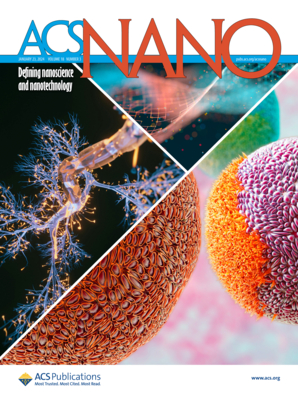Heralded Generation of Correlated Photon Pairs from CdS/CdSe/CdS Quantum Shells
IF 15.8
1区 材料科学
Q1 CHEMISTRY, MULTIDISCIPLINARY
引用次数: 0
Abstract
Quantum information processing demands efficient quantum light sources (QLS) capable of producing high-fidelity single photons or entangled photon pairs. Single epitaxial quantum dots (QDs) have long been proven to be efficient sources of deterministic single photons; however, their production via molecular-beam epitaxy presents scalability challenges. Conversely, colloidal semiconductor QDs offer scalable solution processing and tunable photoluminescence, but suffer from broader linewidths and unstable emissions. This leads to spectrally inseparable emission from exciton (X) and biexciton (XX) states, complicating the production of single photons and triggered photon pairs. Here, we demonstrate that colloidal semiconductor quantum shells (QSs) achieve significant spectral separation (∼75–80 meV) and long temporal stability of X and XX emissive states, enabling the observation of exciton-biexciton bunching in colloidal QDs. Our low-temperature single-particle measurements show cascaded XX-X emission of single photon pairs for over 200 s, with minimal overlap between X and XX features. The X-XX distinguishability allows for an in-depth theoretical characterization of cross-correlation strength, placing it in perspective with photon pairs of epitaxial counterparts. These findings highlight a strong potential of semiconductor quantum shells for applications in quantum information processing.

碲化镉/碲化镉/碲化镉量子壳相关光子对的预示性生成
量子信息处理需要能够产生高保真单光子或纠缠光子对的高效量子光源(QLS)。单个外延量子点(QDs)早已被证明是确定性单光子的高效来源;然而,通过分子束外延技术生产这些量子点却面临着可扩展性方面的挑战。相反,胶体半导体 QDs 可提供可扩展的溶液处理和可调光致发光,但存在线宽较宽和发射不稳定的问题。这导致激子(X)态和双激子(XX)态的发射在光谱上不可分割,使单光子和触发光子对的产生变得复杂。在这里,我们证明了胶体半导体量子壳(QSs)实现了 X 和 XX 发射态的显著光谱分离(∼75-80 meV)和长时间稳定性,从而能够在胶体 QDs 中观察到激子-双激子束射。我们的低温单粒子测量显示,单光子对的 XX-X 级联发射超过 200 秒,X 和 XX 特征之间的重叠极少。X-XX 的可区分性使我们能够对交叉相关强度进行深入的理论描述,并将其与外延对应物的光子对进行比较。这些发现凸显了半导体量子壳在量子信息处理应用中的巨大潜力。
本文章由计算机程序翻译,如有差异,请以英文原文为准。
求助全文
约1分钟内获得全文
求助全文
来源期刊

ACS Nano
工程技术-材料科学:综合
CiteScore
26.00
自引率
4.10%
发文量
1627
审稿时长
1.7 months
期刊介绍:
ACS Nano, published monthly, serves as an international forum for comprehensive articles on nanoscience and nanotechnology research at the intersections of chemistry, biology, materials science, physics, and engineering. The journal fosters communication among scientists in these communities, facilitating collaboration, new research opportunities, and advancements through discoveries. ACS Nano covers synthesis, assembly, characterization, theory, and simulation of nanostructures, nanobiotechnology, nanofabrication, methods and tools for nanoscience and nanotechnology, and self- and directed-assembly. Alongside original research articles, it offers thorough reviews, perspectives on cutting-edge research, and discussions envisioning the future of nanoscience and nanotechnology.
 求助内容:
求助内容: 应助结果提醒方式:
应助结果提醒方式:


